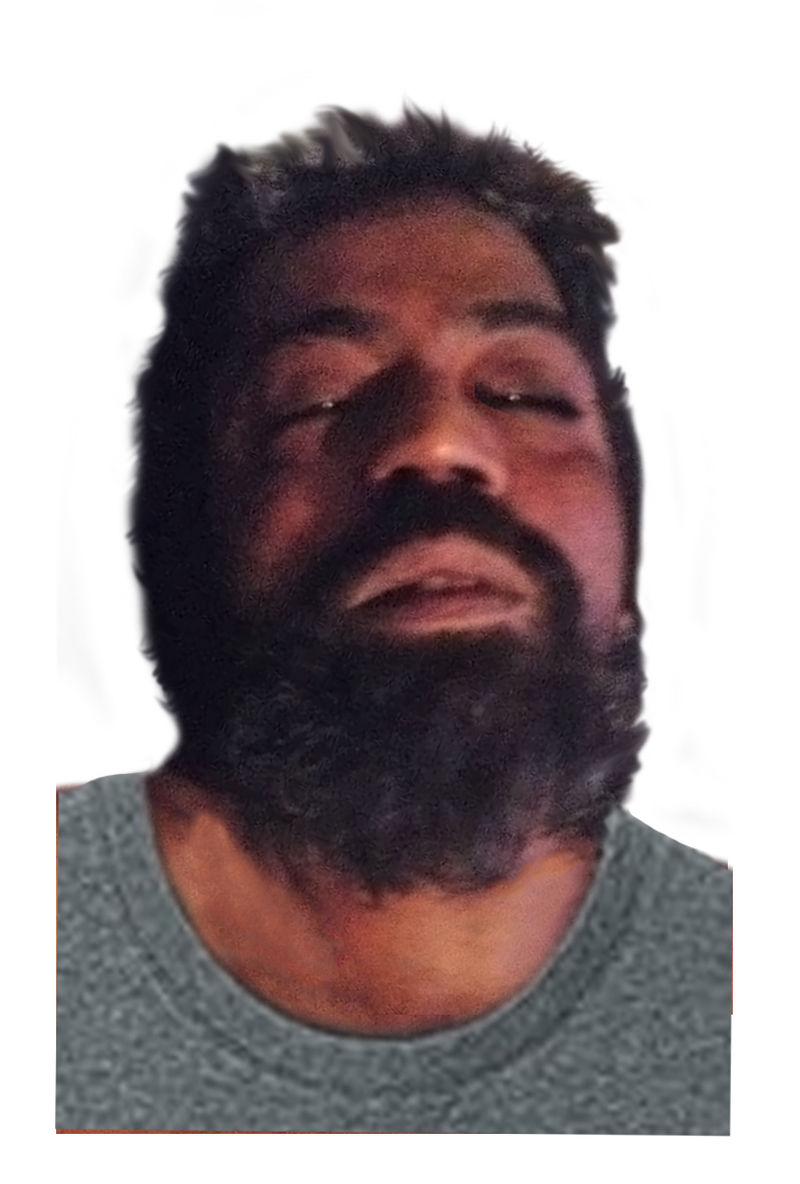Warning: The following story features a photo of a deceased person.
Toronto police took the very rare step Monday of releasing what they believe is a post-mortem photo of a victim of alleged serial killer Bruce McArthur.
Videos by VICE
Police released the image of the unidentified man in a press conference in the hopes the public could help identify him. Det.-Sgt. Hank Idsinga would not say how investigators obtained it and said he did not know when it was taken.
“We believe this is a photo of a deceased person,” said Idsinga. He said he recognized that seeing the photo could be traumatic to the man’s kin, who may not be aware that he’s dead.
“I do not want to release this picture and am doing so as a last resort,” he added.

So far police have charged McArthur, a 66-year-old landscaper, with six counts of first-degree murder in the deaths of Andrew Kinsman, Selim Esen, Majeed Kayhan Soroush Mahmudi, Dean Lisowick, and Skandaraj Navaratnam. They have found seven sets of remains in large planters on a midtown Toronto property McArthur worked on. However, they have only identified three sets of remains, belonging to Kinsman, Mahmoudi, and Navaratnam. Lisowick was never reported missing.
Many are speculating the image released Monday may have been taken by McArthur and retrieved by police.
Police told VICE the photo underwent “some digital editing.”
Former police officer Ryan Duquette, who now runs digital forensics firm Hexigent, told VICE it’s “very plausible” that the white background in the photo as well as the T-shirt were photoshopped.
According to the National Post, both the eraser and the smudge tools in Photoshop were used dozens of time.
Jooyoung Lee, an associate professor of sociology at the University of Toronto who researches serial killers, told VICE the police’s release of the photo isn’t totally unprecedented.
When police arrested LA-based serial killer Lonnie Franklin Jr., who was nicknamed the “Grim Sleeper” because he took a long break in between some of the murders, they found more than 1,000 photos of women and young girls. In many, the women were alive and in sexual poses, but in others they appeared to be dead or asleep. Police released 180 photos to get the public’s help in identifying the women.
Lee said it’s not surprising that a serial killer would keep photographs or souvenirs from his killings.
“Many serial killers will keep articles of clothing, body parts, hair, limbs, and they’ll keep photos of their victims because it’s a way to relive the thrill they experienced torturing and killing a victim,” he said.
Lee said he understands why Toronto police may feel they needed to release the unidentified man’s image, but from a victim’s perspective it’s “callous,” he said.
“I just have to imagine if one of my friends or my lover or my sibling had gone missing long ago and now I’m turning on the TV at night and seeing pictures of that person dead,” he said.
He noted it’s one more example of Toronto police “bungling” the case from a public relations standpoint. In December, Chief Mark Saunders shut down the possibility of a serial killer and last week he told the Globe and Mail he wished more members of the Gay Village community had come forward with tips to help police solve the missing persons cases. The latter comment has been slammed as victim blaming.
On social media, people expressed horror that the image of a corpse is circulating publicly.
“Bruce McArthur gets to have photos of him posing on vacation used in every article of him, and yet the only photo apparently available of his most recently identified victim is one of him after he was murdered. This world is cruel and I’m angry,” tweeted Emma Schützkowski.
Caelan Conrad, host of the podcast Yesterqueer tweeted, “@TorontoPolice now releasing the photo souvenir serial killer Bruce McArthur took after killing this queer man. They want help ‘identifying’ him.’ After over a decade of ignoring, and invalidating our concerns. After saying we should have helped more. They release this snuff.”
Former Kingston Police Chief Bill Closs told VICE in his 43 years in policing he has never known of an actual photo of a deceased body being released.
“I have seen reconstructed facials/photos but not an actual,” he said.
He said the takeaway is Toronto police are desperate, having likely already tried searching missing persons files, DNA analysis and reaching out to other police departments to try and get an ID.
“They are trying their best to identify this person knowing the risk involved relevant to the shock of a next of kin seeing the photo.”
Follow Manisha on Twitter.




